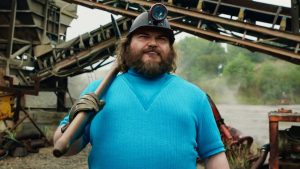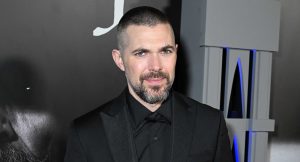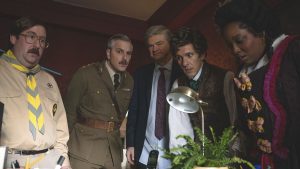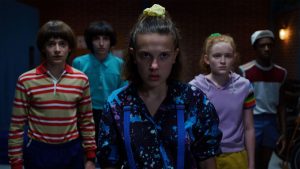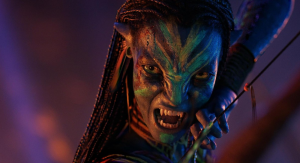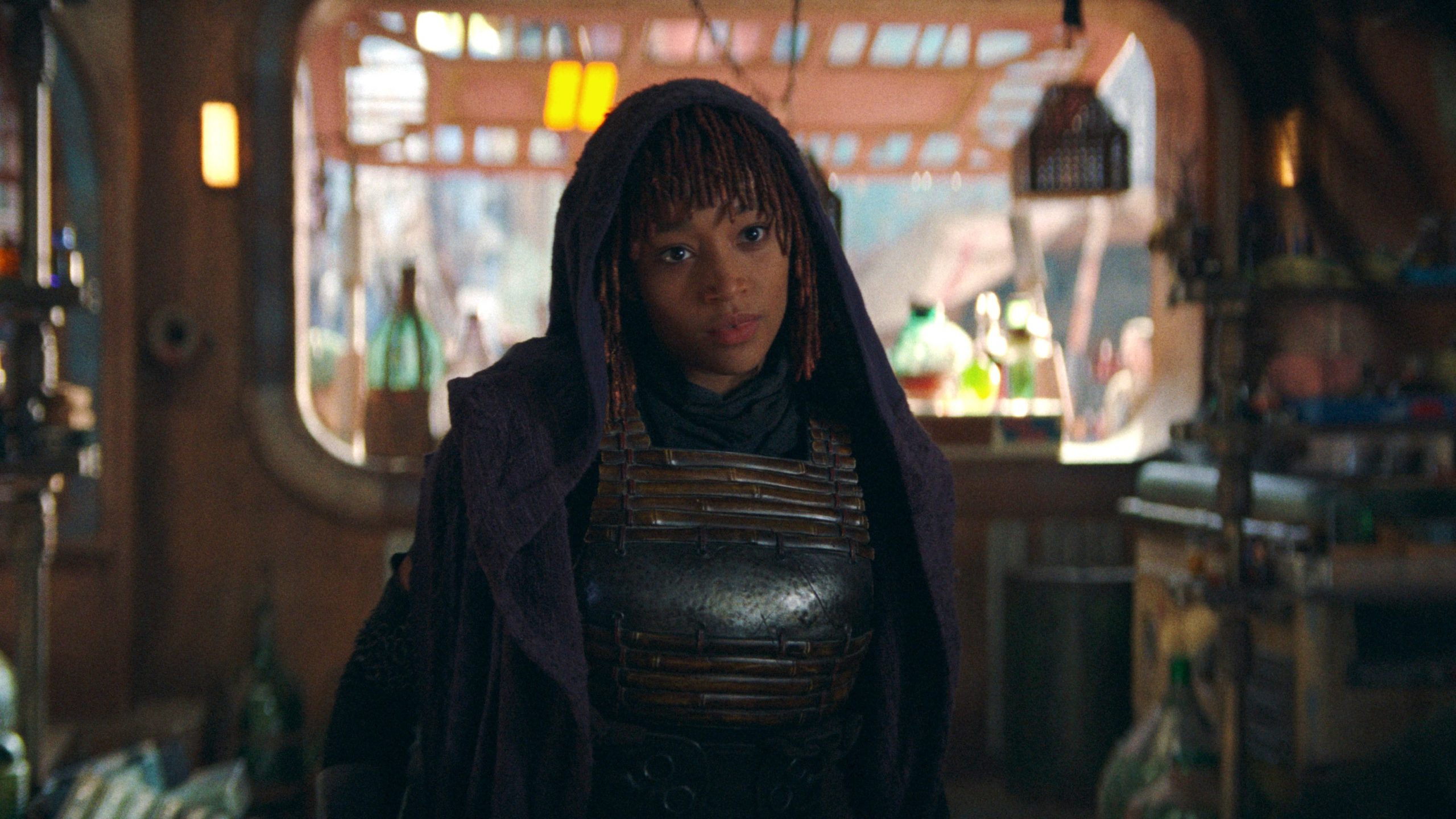
This Star Wars: The Acolyte review contains spoilers.
One of The Acolyte’s most enticing selling points is that it’s the first live-action Star Wars show that exists outside of the Skywalker Saga, set 100 years before The Phantom Menace. This might lead one to believe that the show would be a refreshing change of pace or tone for the franchise, but unfortunately, it actually looks, sounds, and feels a lot like the other Star Wars shows, at least in its first two episodes.
This isn’t an inherently bad thing, of course, as most of the other Star Wars live-action shows have been quite good. The Acolyte has a lot going for it, with a great premise, an intriguing central mystery that reveals itself in captivating fashion, and some rock-solid performances. But it feels like there was a missed opportunity here to lean into the aspects of the story that lend themselves to more tone-specific genre storytelling.
The story centers on the Jedi trying to capture a serial Jedi-killer (Amandla Stenberg) out for revenge, and the show opens with the masked assassin confronting Jedi Master Indara (Carrie Ann Moss) face-to-face in (where else?) a good ol’ Star Wars cantina/bar. What ensues is a fight scene that feels like a breath of fresh air, with breathtaking hand-to-hand martial arts choreography filmed tastefully so that all of the elegant strikes, parries, and counterattacks are readable. Kicking off the series in this way recalls the opening fight from Kill Bill (there’s even a shot of a horrified child at the end), but with a lot less blood and, frankly, a lot less tension. Overall, the scene sets the tone for the rest of the story in explosive fashion.
The thing is, the show doesn’t really follow up on all of this initial momentum. With such an overtly violent setup you’d think we’d be in for a darker Star Wars tale, something stylized or even crime noir-ish. The main trilogy was a space opera, and The Mandalorian initially leaned heavily into Westerns, but The Acolyte so far only seems to only have slight genre tendencies underneath its space fantasy backdrop. While the series does hit its fair share of minor chords in its first two episodes, there’s nothing particularly dissonant or disruptive going on thematically or stylistically. It’s a well-written and well-told Star Wars story that’s presented in a very similar manner as all of the other shows we’ve seen so far from the franchise.
What’s disappointing about this is that the premise and setting of The Acolyte is a perfect excuse to deviate from the established formula in a big way. That doesn’t really happen here—the way the show is edited, the way the scenes are lit, the orchestral score, the fraught master-padawan relationship…it all feels too familiar to be truly exciting. The Acolyte stands comfortably beside its Star Wars TV show peers, but it doesn’t really stand out, at least not yet.
Okay, so the show isn’t as edgy or subversive as it could have been. That being said, it’s still one hundred percent worth watching. The story’s greatest virtue is that its secrets are revealed at a clip that’s actually kind of addictive. There’s a propulsive nature to the way bits of the characters’ backstories are occluded and subsequently unveiled, which makes the show consistently entertaining to watch.
When we meet Osha (also Stenberg), for example, she’s presented to us in a way that causes us to question whether or not she really is the Jedi-killer we just watched murder Indara. We’re left to ponder this for a while, and then we see her haunting vision of Mae, her twin sister, and a little piece of the bigger picture comes into view. We still don’t know who Mae’s master is, why she wants to kill these particular Jedi, or the truth behind the sisters’ estrangement, but the show gives us the perfect-sized morsel to want to come back for more answers.
There are also a zillion questions behind Master Sol’s (Squid Game’s Lee Jung-jae) connection to his former Padawan Osha. He clearly harbors a measure of regret when it comes to Osha and Mae, and while he reveals to his pupil Jecki Lon (Dafne Keen) that he watched Mae die after she set her entire family on fire, it’s clear there’s more to the story than that.
Lee is just a phenomenal actor and brings the same gravitas and warmth to The Acolyte as he did to Squid Game. Though there isn’t nearly as much pathos or complexity to Sol as there is with Seong Gi-hun, Lee still brings an underlying but palpable sense of compassion and humanity to every scene he’s in.
Stenberg brings a lot to the table, too, and she’s outstanding in the way she breathes life into Osha’s story. But there’s something a little off-the-mark in the way she’s presented as Mae. It’s difficult to pin down whether it’s the material or Stenberg’s portrayal, but Mae just doesn’t come off as imposing or frightening as she should. It may be because Stenberg is too damn likable to play a cold-hard killer, or perhaps there should have been more of an effort to demonstrate the rage and anguish that compels her. Whatever the cause, Mae should be scarier than she is.
The rest of the cast don’t get a ton of time to flesh their characters out in the first two episodes, but they impress nonetheless. Charlie Barnett, who plays uptight Jedi Knight Yord, takes the by-the-books, overachieving blue-chipper archetype and imbues it with an intriguing undercurrent of angst, and while Moss isn’t on screen for long, she nevertheless elevates the entire show thanks to her brilliant performance in the opening fight scene. Manny Jacinto maximizes his minutes as well as Mae’s fidgety “supplier” of sorts, Qimir.
There’s clearly a lot more going on with each character than we get to see in the first two episodes, and showrunner Leslye Headland and the writers do a good job of hinting at deeper truths without letting the teases distract from the going concerns of the story. Our interest is piqued on a character level, and we look forward to learning more about supporting players like Jecki, Yord, and Qimir in the coming weeks.
Something that is only gently touched on in the first two episodes is the positioning of the story on the larger Star Wars timeline. There are a lot of thematic implications at play here. The tail end of the High Republic era is a generally prosperous time for the galaxy as the Republic hasn’t yet been corroded from the inside and the Jedi’s prominence is quite strong. Even the Nihil, the anarchistic force of evil from the High Republic books and comics, seem to no longer be in the picture.
The benefit of this is that the show’s dark forces have an inherent mystique to them. The Sith are in hiding during this relatively peaceful period, and we don’t know all that much about Palpatine’s predecessors in the High Republic era. While we know the Sith will eventually rise to power again in the Prequel era, it’ll be fascinating to learn how those evil seeds were first planted. We assume Mae’s mysterious master has a thing or two to do with that.
We also know at the end of the High Republic era we’ll likely see cracks start to form in the Jedi’s solidarity and position in society. Sol’s conversations with Vernestra Rwoh (a mainstay of The High Republic book series) are tinged with anxiety regarding the perception of the Jedi Order to governing bodies and the public. Great stuff.
On a more personal level, it’s going to be interesting to see how the sisters are ultimately re-acquainted and how they process whatever catastrophe they survived when they were separated. Sol and the crew’s confrontation with Mae at the end of episode 2 is a definite high point (again, wonderful fight choreography), but what’s even better is the fleeting look the sisters share before Osha pulls the trigger on her blaster. It’s the most emotionally charged moment of the show so far, and it’s doubly impressive when you realize Stenberg did the whole damn moment by playing off of herself.
Cinematically, The Acolyte doesn’t quite meet the level of danger and intensity the story calls for. The sense of peril and animus feels a little low considering the severity of the stakes (strangely, the second Jedi murder comes off as borderline comedic in certain moments). But the show does give off a vibe that it will only get better as it goes on. The more the mystery unfolds, the more engrossing it gets, which is a hopeful sign. And the more interesting ideas seem to be bubbling to the surface slowly as well. The weaponized subversion of the Jedi philosophy is the most thought-provoking angle brought to the forefront.
“The Jedi live in a dream…An Acolyte kills the dream.”
Learn more about Den of Geek’s review process and why you can trust our recommendations here.
The post Star Wars: The Acolyte Episode 1 and 2 Review appeared first on Den of Geek.
